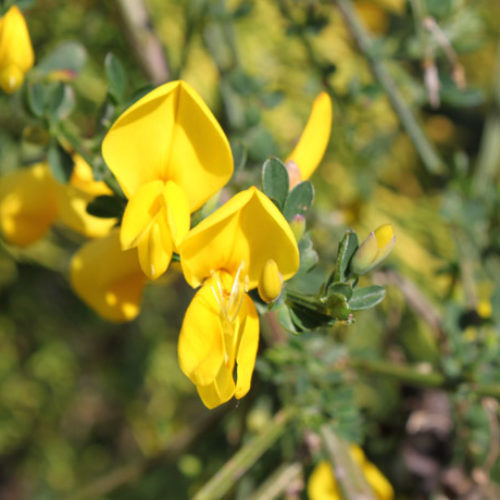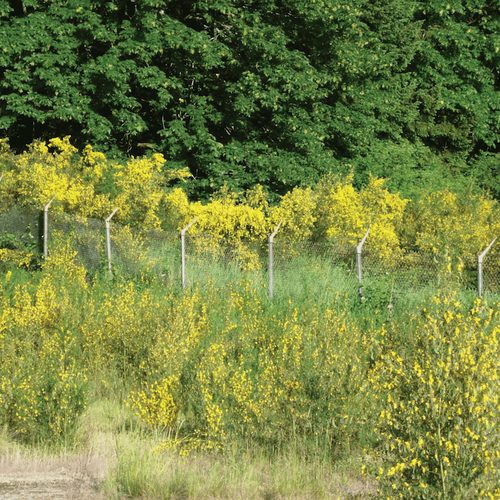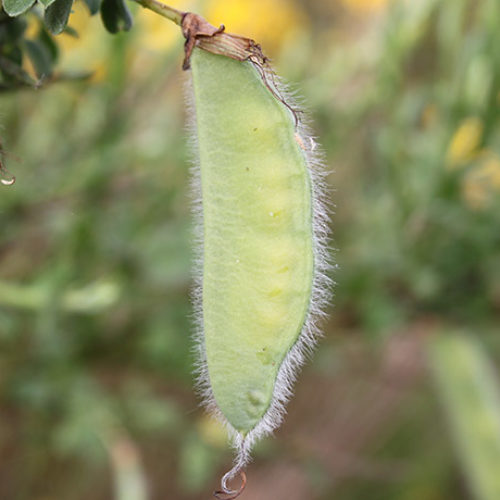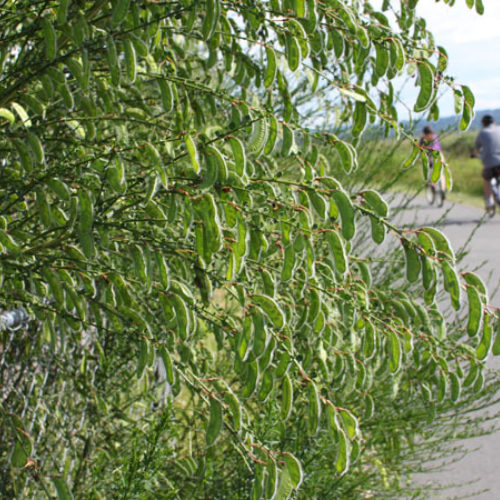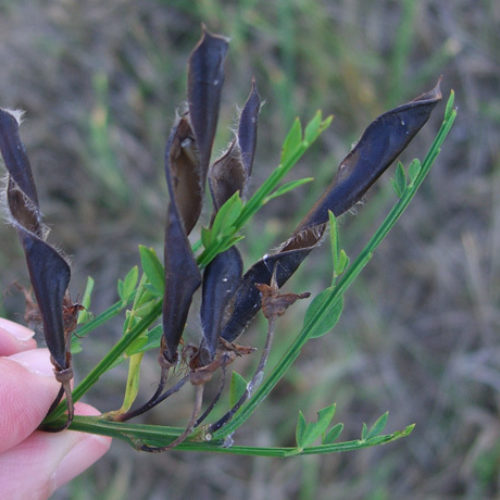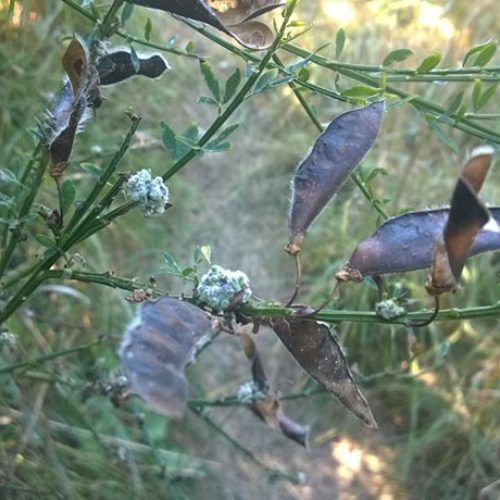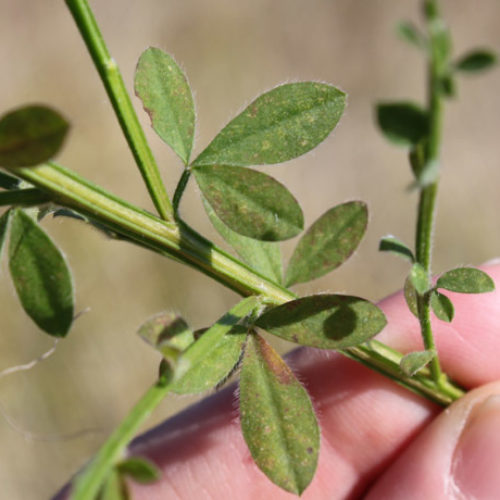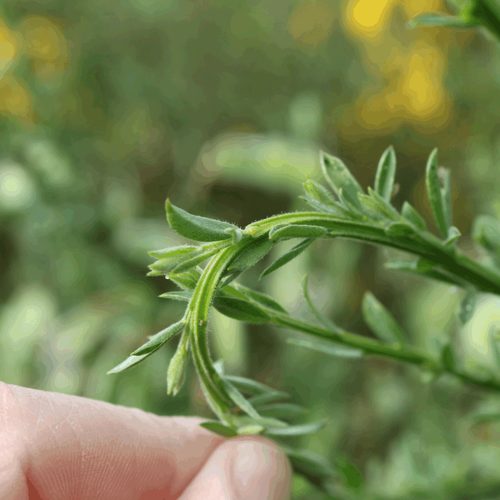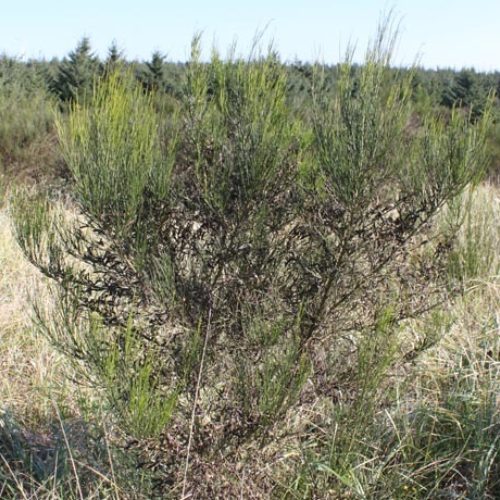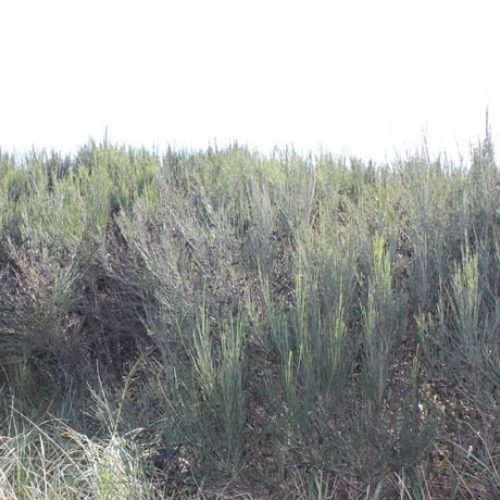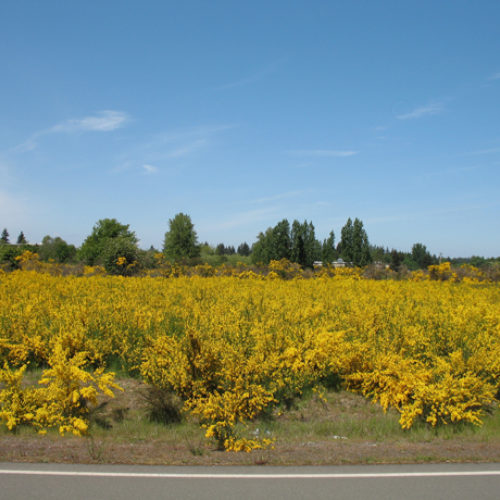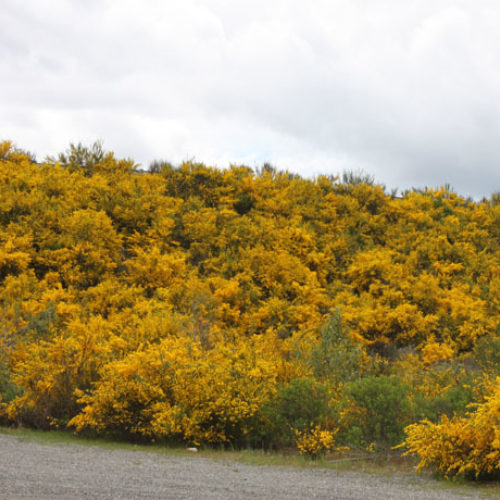Scotch Broom
Cytisus scoparius
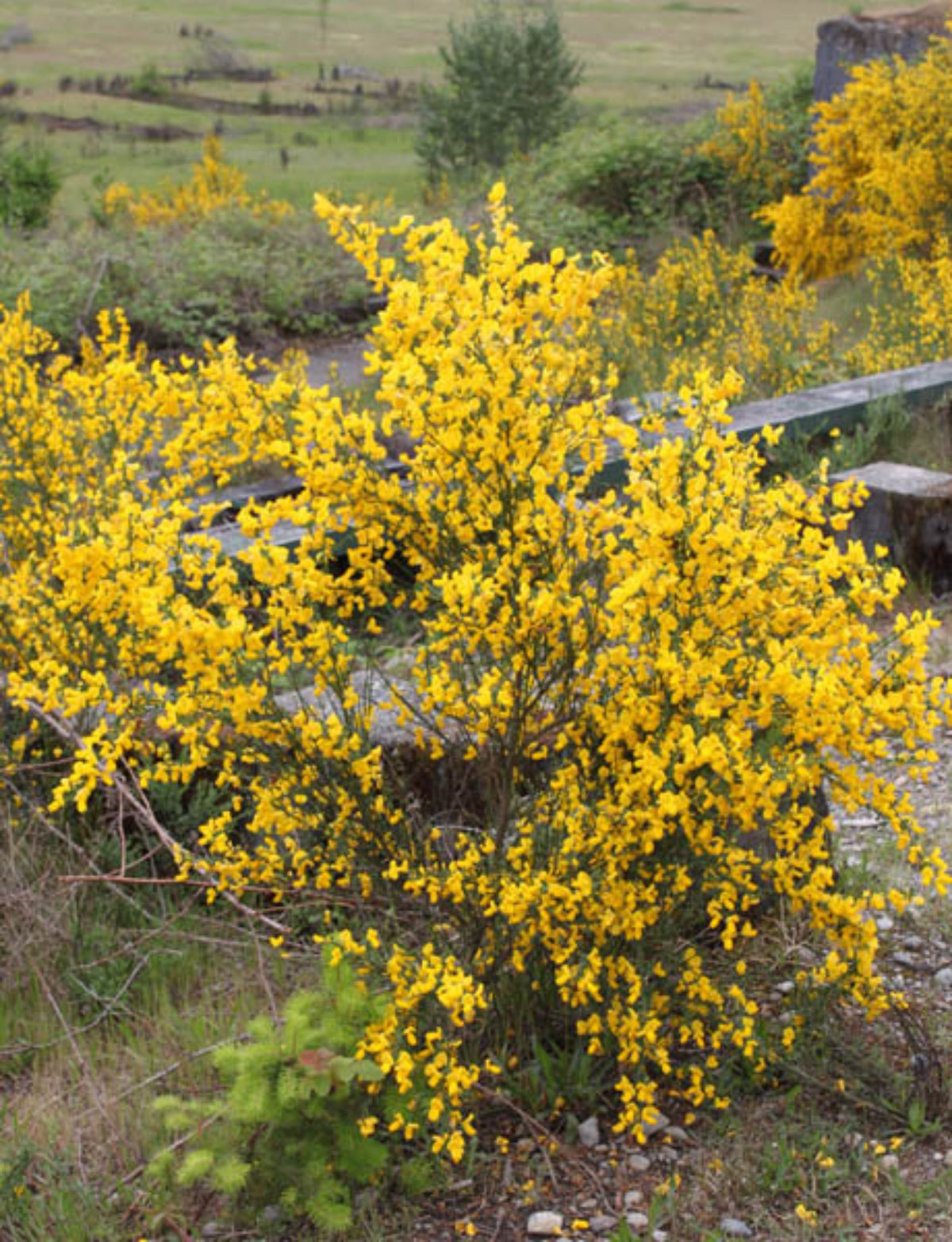
Family: Fabaceae
Other Common Names: broomtops, common broom, European broom, Irish broom, Scottish broom, Scot's broom
Weed class: B
Year Listed: 1988
Native to: Europe
Is this Weed Toxic?:
livestock
Legal listings:
This plant is also on the Washington State quarantine list. It is prohibited to transport, buy, sell, offer for sale, or distribute plants or plant parts of quarantined species into or within the state of Washington or to sell, offer for sale, or distribute seed packets of seed, flower seed blends, or wildflower mixes of quarantined species into or within the state of Washington. Please see WAC 16-752 for more information on the quarantine list. For questions about the quarantine list, contact the Washington State Department of Agriculture's Plant Services Program at (360) 902-1874 or email PlantServices@agr.wa.gov. For other questions see below.
Why Is It a Noxious Weed?
It displaces native and beneficial plants, causing loss of grassland and open forest. It aggressively spreads to form monocultures, replacing desirable forage grasses and young trees. Seeds are toxic to livestock and horses.
How would I identify it?
General Description
Scotch broom is a perennial, many-branched, shrub ranging in height from 3 to 10 feet tall.
Flower Description
Flowers are typical of those in the pea family. They are bright yellow, about 3/4 inches long and have 5 petals.
Leaf description
There are few leaves. The upper are simple and the lower are 3 parted. They are deciduous and pointed at both ends. Leaves may fall early in the year, leaving bare green stems.
Stem description
Stems are woody and dark green. Young branches have 5 green ridges with hairs. When mature, stems become glabrous and ridges disappear. Young stems remain green throughout the year.
Fruit Seed Description
Seed pods are brown-black, legume-like, flattened and have hairy margins with several seeds per pod.
May Be Confused With
Spanish broom (Spartium junceum) and French broom (Genista monspessulana), Class A noxious weeds in Washington, and gorse (Ulex europaeus), a Class B noxious weed in Washington, look similar to Scotch broom. Spanish broom has round stems and flowers only at stem tips. French brooms's leaves are all three-parted and flowers are in clusters of 4-10. Gorse has spines on its stems. If you need help with plant identification, please contact your county noxious weed coordinator.
Where does it grow?
Scotch broom can be found on roadsides, pastures, grasslands, open areas and areas of recent soil disturbance. Please click here to see a distribution map of Scotch broom in Washington.
How Does it Reproduce?
Scotch broom reproduces by seed. Each seed can remain viable for over 30 years (some estimates are as long as 80 years).
How Do I Control It?
General Control Strategy
Because plants can produce thousands of seed each year and these seeds can survive for a long period of time in the soil, methods must be repeated for many years. Continue to monitor areas for seedlings after plants have been controlled. Soil disturbance can cause a flush of seed germination. Aim to control plants before seed pods mature. Seed and plant with native and/or non-native but not invasive species to provide competition to germinating seeds.
Mechanical Control
Hand pulling and digging up plants are an option for small infestations. Use a tool like a Weed Wrench, Extractigator, or Uprooter to leverage plants out of the ground, along with their roots. Check with your county noxious weed board to see if they have weed wrenches they can loan out. Note that soil disturbance from leveraging out plants may stimulate seed germination. Reduce disturbance as much as possible and control seedlings. Chopping, cutting or mowing is an option for flat areas. Cutting plants close to the ground when they are drought stressed, can provide control on plants with stems wider than 2 inches, but make sure to monitor plants for resprouts and control. Repeated cuttings a year over multiple years may be provide control as well. Combining cutting with an herbicide treatment can also be successful.
Biological Control
The Scotch broom seed weevil, Exapion fuscirostre, larvae feed on seeds of Scotch broom in developing seed pods. The adults also feed on flowers and the tips of stems, though their damage is not significant. The Scotch broom bruchid, Bruchidius villosus, larvae feed on developing seeds and impact the plant's reproduction. For more information about the biological control of Scotch broom, please visit WSU Extension Integrated Weed Control Project.
Herbicide Control
Foliar spray, basal bark treatment, and cutting stems and painting the fresh cut with herbicide can provide effective control. Please refer to the PNW Weed Management Handbook, the report on Scotch broom from the book "Weed Control in Natural Areas in the Western United States", and the herbicide section starting on page 119 in the publication Biology and Biological Control of Common Gorse and Scotch Broom. Contact your county noxious weed coordinator for further information.
For More Information
Read our brochure on Scotch Broom
See our Written Findings for more information about Scotch broom (Cytisus scoparius).
Report on Scotch broom from the book "Weed Control in Natural Areas in the Western United States"
Publication: Biology and Biological Control of Common Gorse and Scotch Broom
Cowlitz County NWCB Fact Sheet on Scotch broom
Stevens County NWCB Fact Sheet on Scotch broom
Whatcom County NWCB Fact Sheet on Scotch broom
King County NWCB Fact Sheet on Scotch broom
Clallam County NWCB Fact Sheet on Scotch broom
Jefferson County NWCB Fact Sheet on Scotch broom
Mason County NWCB Fact Sheet on Scotch broom
San Juan County NWCB Brochure on Scotch broom
Lincoln County NWCB Brochure on Scotch broom
Control Options for Scotch broom from King County NWCB
Control Options for Scotch broom from Whatcom County NWCB



